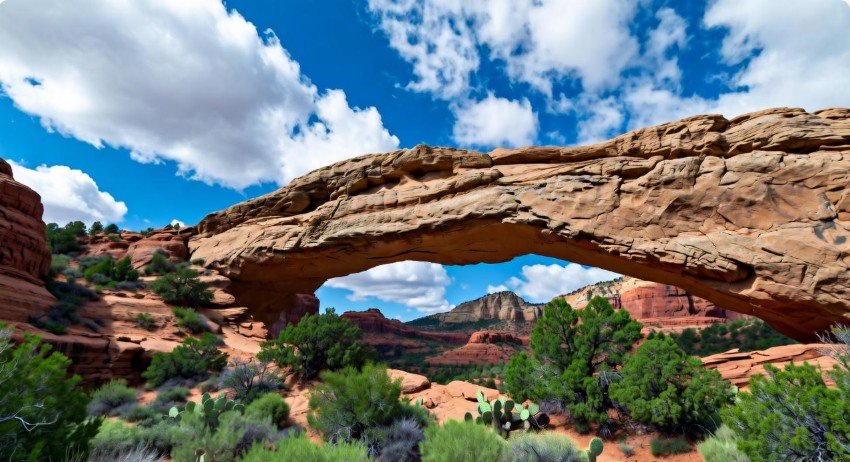Arizona Window Tint Laws (Update 2025): Everything You Need to Know Before You Tint

If you’ve ever driven through an Arizona summer, you know the sun feels relentless. The rays beat down on your car, heating up the seats, steering wheel, and even your patience. That’s where window tinting comes in—it’s not just about style, it’s about survival. But before you rush to darken your windows, there’s something important you should know: Arizona window tint laws are strict and specific.
These laws were first put into place in 1994 to ensure safety and visibility on the road. Since then, they’ve helped regulate how dark or reflective your car windows can be. The goal? To protect both drivers and law enforcement officers from visibility issues caused by overly tinted glass.
In this 2025 update, we’ll dive deep into what’s allowed, what’s not, and how to make sure your car stays compliant. We’ll discuss everything—from VLT (Visible Light Transmission) and VLR (Visible Light Reflection) to color restrictions, penalties, and even medical exemptions.
By the end of this guide, you’ll not only know the numbers but understand the “why” behind them. So, let’s start by decoding the basics of how tint laws in Arizona actually work.
Understanding Window Tinting: The Basics You Can’t Ignore
Before we get into the nitty-gritty of percentages and legal limits, let’s make sure you understand what tinting really means. Window tinting is the process of applying a thin film to your car’s windows. This film reduces the amount of sunlight and UV rays that pass through, keeping your car cooler and protecting your interior.
Two important measurements define how tinting is regulated:
-
VLT (Visible Light Transmission) — This measures how much visible light passes through the window film. A higher VLT percentage means the tint is lighter and lets more light in.
-
VLR (Visible Light Reflection) — This measures how much light is reflected off your window. Too much reflection can blind other drivers, which is why it’s also regulated.
Understanding these two factors helps you choose the right tint while staying on the right side of the law. If you go too dark, you risk a ticket. If you go too reflective, you might make your car look like a mirror—which is also illegal in most cases.
Tinting might seem like a small customization, but it has big consequences if not done right. So, let’s explore exactly how dark you can go in Arizona without crossing the line.
Legal Window Tint Darkness in Arizona (VLT): What You Need to Know
When it comes to tint darkness laws in Arizona, everything revolves around the VLT percentage. The state has clear and specific rules depending on the type of vehicle you own.
Let’s break it down:
For Passenger Cars (Sedans):
-
Windshield: You can apply a non-reflective tint above the manufacturer’s AS-1 line.
-
Front Side Windows: Must allow at least 33% of light in. That means you can’t go darker than 33% tint.
-
Back Side Windows: You can go as dark as you want.
-
Rear Window: Any darkness level is permitted.
For SUVs and Vans (Multi-Purpose Vehicles):
-
Windshield: Only a non-reflective tint is allowed above the AS-1 line.
-
Front Side Windows: Must allow 33% of visible light to pass through.
-
Back Side Windows: Any darkness is fine.
-
Rear Window: No restriction on tint darkness.
Here’s a quick look at these rules in table form for easy understanding:
| Window Type | Passenger Cars (Sedans) | SUVs/Vans |
|---|---|---|
| Windshield | Non-reflective tint above AS-1 line | Non-reflective tint above AS-1 line |
| Front Side Windows | 33% or lighter | 33% or lighter |
| Back Side Windows | Any darkness allowed | Any darkness allowed |
| Rear Window | Any darkness allowed | Any darkness allowed |
These rules might sound straightforward, but they make a huge difference in your driving experience. The 33% rule on front windows helps maintain enough visibility for both you and law enforcement officers while giving you comfort and UV protection.
Many drivers in Arizona make the mistake of assuming “darker is better.” But that’s not always true. If your tint is too dark, especially on the front sides, you risk getting pulled over. The fines aren’t massive, but they can add up—and repeated violations could lead to bigger legal issues.
The Importance of Staying Within Legal Tint Limits
You might wonder why Arizona is so specific about window tint percentages. After all, it’s one of the sunniest states in the country, right? Shouldn’t darker tints be encouraged?
The answer lies in road safety and law enforcement visibility. When windows are too dark, police officers can’t see inside the vehicle during stops, creating potential safety concerns. Similarly, extremely dark windows can make it difficult for you to see clearly at night, increasing the risk of accidents.
The 33% VLT requirement strikes a balance—it provides UV and heat protection while maintaining visibility. Drivers who stick to this limit find that it offers a comfortable middle ground: enough shade for comfort, without compromising on safety or legal compliance.
So if you’re planning to install new tint, remember: the darker you go, the higher your chance of being stopped. Always check your tint’s VLT rating before installation. It’s a small step that can save you a lot of headaches later.
Legal Window Tint Reflection in Arizona (VLR): What’s Allowed and What’s Not
Now that you know how dark your tint can be, let’s talk about how reflective it can be. This part is often overlooked, but it’s just as important. Visible Light Reflection (VLR) measures how much light bounces off your window.
Overly reflective tints don’t just look flashy—they can be dangerous. They can reflect sunlight into the eyes of other drivers, creating glare and distraction. That’s why Arizona regulates this aspect too.
Here’s what the law says:
For Passenger Cars (Sedans):
-
Front Side Windows: Must not reflect more than 35% of light.
-
Back Side Windows: Must not reflect more than 35% either.
For SUVs and Vans:
-
Front Side Windows: No more than 35% reflective.
-
Back Side Windows: No more than 35% reflective as well.
Basically, you can’t make your car look like a rolling mirror. Arizona allows a mild level of reflection because it helps block out heat—but too much, and you’ll be breaking the law.
If you’re choosing a tint film, ask your installer about its VLR percentage. Many high-quality films are designed to reduce glare and heat without crossing the 35% reflection limit. Spending a little more on the right film can help you stay compliant while keeping your car cool and comfortable.
Other Arizona Window Tint Rules You Should Know
Tint darkness and reflection aren’t the only things that matter. Arizona has a few more important rules that drivers often overlook. Let’s go over them one by one in a simple, clear way.
1. Side Mirrors Are Required for Tinted Rear Windows
If you decide to tint your rear window, you must have dual side mirrors on your car. This rule ensures you still have good visibility behind you, even if your back window is darkened.
2. Restricted Tint Colors
Arizona does not allow all colors of tint. You can’t use red or amber tints under any circumstances. These colors can interfere with visibility and are often confused with emergency lights.
However, you can safely use tints in gray, green, bronze, or smoke shades without any issue. These colors not only look classy but are also legally acceptable.
3. No Certification Required
Unlike some states, Arizona does not require manufacturers to certify their tint films. This gives drivers more freedom in choosing brands and installers. Still, it’s your responsibility to ensure the tint you choose meets Arizona’s legal standards.
4. No Stickers Required
In Arizona, you’re not required to put a compliance sticker on your window after tinting. This might seem like a small thing, but it’s convenient—no need to clutter your glass with extra labels.
5. Medical Exemptions
Here’s where things get a bit more personal. Arizona allows medical exemptions for individuals who have certain health conditions that make them sensitive to sunlight.
To qualify, you’ll need:
-
A doctor’s note detailing your condition.
-
A document from your tint installer verifying that your tint meets the exemption standards.
These medical exemptions allow you to use darker tints on all windows. It’s a thoughtful consideration for people with genuine medical needs, such as lupus or photosensitivity.
Penalties for Violating Arizona Tint Laws
If you ignore these laws, you won’t just get a warning. Arizona takes window tint violations seriously, though the penalties are relatively mild compared to some other states.
If your tint doesn’t meet the legal standards, you could be fined up to $250 per violation. In some cases, officers may even issue a “fix-it” ticket, which means you’ll need to remove or adjust your tint and show proof of compliance.
Repeated offenses can lead to higher fines and more trouble with your vehicle registration. So, it’s better to do it right the first time.
A few extra dollars spent on professional tint installation can save you from hundreds in fines and the hassle of getting your car inspected again.
Choosing the Right Window Tint for Arizona Drivers
Picking the right window tint goes beyond legality—it’s about comfort, safety, and aesthetics. Arizona’s sun is no joke, and a poorly chosen tint can make your daily drive unbearable. When selecting a film, there are a few key factors to consider:
-
Heat Rejection – Arizona summers can push temperatures well above 100°F. High-quality tint films block up to 50-70% of solar heat, keeping your car cooler and protecting your interior from sun damage.
-
UV Protection – Tints that block UV rays help prevent skin damage and fading of your car’s upholstery. A good film can block up to 99% of UV rays, which is a huge benefit for long-term health and interior preservation.
-
Durability and Warranty – Some tints bubble, peel, or fade over time. Choose a film with a strong warranty and proven longevity. Professional installers often offer warranties of 5-10 years, ensuring peace of mind.
-
Color and Style – While gray, green, bronze, or neutral smoke are allowed, the shade you pick also affects heat rejection and visibility. Lighter tints may let more heat in but are easier to see through at night, while darker tints provide more sun protection but can reduce nighttime visibility.
By balancing these factors with Arizona’s VLT and VLR regulations, you can enjoy the perfect tint that is both legal and practical.
Tips for Staying Compliant with Arizona Tint Laws
Even with the best intentions, many drivers unintentionally break tint laws. Here are some practical ways to stay on the right side of the law:
-
Check Your VLT – Always verify the Visible Light Transmission percentage before installation. Many shops provide a VLT meter reading to ensure compliance.
-
Consider Night Visibility – Your tint should be dark enough to reduce heat but light enough to see clearly at night. Arizona police often check this during routine stops.
-
Install Professionally – DIY kits can be tempting, but professional installers are familiar with Arizona laws and can ensure your tint meets both VLT and VLR limits.
-
Keep Medical Documentation Ready – If you qualify for a medical exemption, always keep your documentation in the car to avoid fines.
-
Maintain Mirrors and Visibility – If your rear window is tinted, dual side mirrors are required. Don’t skip this step—it’s a legal necessity.
Following these guidelines will save you stress, fines, and potential legal trouble. A little preparation goes a long way when it comes to Arizona’s strict tinting laws.
How to Care for Your Window Tint
Once your tint is installed, proper care is crucial to keep it looking great and lasting long. Improper cleaning or maintenance can cause bubbling, peeling, or discoloration. Here’s how to maintain your tint in Arizona’s harsh climate:
-
Use a Soft Cloth – Avoid paper towels and abrasive sponges. Microfiber cloths are perfect for gentle cleaning.
-
Choose the Right Cleaner – Use a mild soap and water solution. Avoid ammonia-based cleaners, which can damage the tint film.
-
Clean Gently – Don’t scrub aggressively. Light wiping is enough to remove dust and fingerprints without harming the tint.
-
Avoid Sharp Objects – Never stick razor blades, knives, or other sharp objects near tinted windows—they can scratch or tear the film.
-
Check for Damage Regularly – Inspect your windows for bubbling, peeling, or discoloration. Early detection makes repairs easier and prevents worsening problems.
By taking good care of your tint, you’ll enjoy comfort, style, and legal compliance for many years.
Arizona Window Tint FAQs
Here are answers to some of the most common questions about Arizona window tint laws:
1. Can I tint my windshield in Arizona?
Yes, but only above the manufacturer’s AS-1 line, and the tint must be non-reflective. This ensures visibility and safety while still reducing sun glare.
2. Are rear windows fully tintable?
Yes. Both passenger sedans and SUVs can have any darkness on back side and rear windows, but dual side mirrors are required if the rear window is tinted.
3. Are colored tints allowed?
Only certain colors are legal. You can use gray, green, bronze, or neutral smoke. Red and amber tints are strictly prohibited.
4. Do I need a sticker to prove compliance?
No. Arizona does not require a sticker or certification for tinted windows, simplifying the process for car owners.
5. What if I have a medical condition requiring darker tint?
Arizona law allows medical exemptions. You’ll need a doctor’s note and a document from your installer confirming the tint complies with medical requirements.
6. How reflective can my windows be?
Front and back side windows must not reflect more than 35% of light. This ensures other drivers aren’t blinded by glare.
7. What happens if my tint violates Arizona law?
Violations can result in fines up to $250, and you may be required to remove or adjust the tint. Repeated violations can lead to further penalties.
8. Is professional installation necessary?
While not legally required, professional installation is highly recommended. Installers are familiar with VLT, VLR, and other legal requirements, reducing your risk of fines.
Conclusion: Driving Smart and Staying Legal in Arizona
Arizona’s window tint laws aren’t just arbitrary rules—they exist for a reason. They balance driver comfort, safety, and law enforcement visibility. From VLT percentages to VLR restrictions, from mirror requirements to color limitations, there are plenty of details to consider before darkening your windows.
By choosing the right tint film, staying within legal limits, and maintaining your tint properly, you can enjoy a cooler, more comfortable ride while avoiding fines and legal trouble. Remember, window tinting isn’t just about style—it’s about safety and compliance.
Whether you’re cruising through Phoenix or driving the scenic roads near Sedona, following Arizona’s tint laws ensures you stay safe, stylish, and on the right side of the law.
Disclaimer: The information provided here is for informational purposes only. It should not be considered legal advice. Laws may change, so always verify with local authorities or a licensed attorney in Arizona for the most up-to-date regulations.






